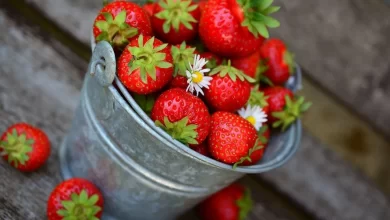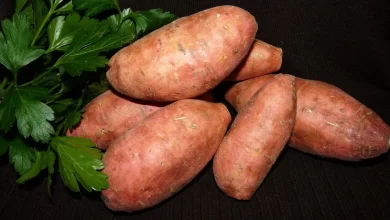The coconut contains an edible kernel or seed, as well as water and oil, both of which are nutritious foods and medicines. Coconuts are easily digestible, high in nutrients and minerals, and contain antibacterial, antifungal, antiviral, antiparasitic, and antioxidant properties. It is native to Asia’s subtropical coastal regions like India, Sri Lanka, Indonesia, Philippines, Thailand.
- The scientific name of a coconut tree is Cocos nucifera, and it is a member of the palm tree family.
- The Portuguese sailor Vasco da Gama called this Polynesian fruit as ‘coco.’ The word coconut is so derived from their naming.
- The coconut first appeared to the western world in the 15th century.
- A coconut tree in proper suitable conditions can produce about 50-150 coconuts annually.
- It takes a full year for coconuts to fully ripe and become tasty to eat.
- Most coconuts belong to one of two genetically distinct groups. The coconut tree is domesticated in India and then spread to the west. After they had been introduced in east Africa, Europeans brought the coconut to the Atlantic coast of Africa and Later to South America.
- Indonesia is the biggest producer of coconut, with 18.6 million tonnes of production in the year 2018. The Philippines is the second biggest producer of coconut with 14.7 million tonnes.
- In some sought of medical emergencies, coconut water can be used as a substitute for blood plasma.
- Coconut has a special place in India as it is used in religious activities and is important in the Hindu religion.
- In the Philippines, it is considered good luck if a coconut is cleanly split open without jagged edges.
- In the year 2018, about 61.86 million metric tons of coconut were produced worldwide.
- The coconut is the largest seed in the world.
- Juiced coconuts provide a rich source of electrolytes. In fact, doctors have used coconut juice to fight dehydration due to dysentery, cholera, and influenza.
- It is been estimated that coconut can sail on the sea for more than 100 days and still can germinate.
- At first, the scientist identified over 60 species of cocoa palm. These days it is considered monotypic with one species, Nucifera. However, it’s been identified that there are over 80 varieties of this tree which are classified by the characteristics such as tall and dwarf.
- The Maldives has a special place for this fruit as it is their national tree as well as part of their coat of arms.
- Coconut flesh is high in fat and can be dried or eaten fresh.
- The tree contains both male and female flowers but do not self-pollinate.
- Some species of octopus in Australia use the shell of the coconuts as a defense mechanism.
- Coconut oil contains nourishing fatty acids that help hydrate and protect the skin. These include linoleic acid (vitamin F), which helps the skin retain moisture, and lauric acid, which has antibacterial properties. The oil is antiviral, antifungal, anti-parasite, and antibacterial.
- Coconut oil is also good for beard growth.
- The oil of this fruit has the same benefits to dog skin and nourishes their skin.
- Coconuts are high in manganese, which is essential for bone health and the metabolism of carbohydrates, proteins, and cholesterol. Cocoanut is also rich in copper and iron, which help to form red blood cells. It also contains selenium, which is an important antioxidant that protects your cells.
- Coconut can also turn into milk which has high health benefits. It can lower blood pressure and cholesterol, build up muscle and help reduce fat, improves digestion, relieves constipation, and can also assist in weight loss.
- Coconut oil can be used as a mosquito repellent and can also be used to replace the use of fossil fuels.
Nutrition Facts of Coconut
Here are the nutrition facts for about 100g of raw coconut.
- Energy (calories): 354
- Protein: 3 grams
- Carbs: 15 grams
- Fiber: 9 grams
- Fat: 33 grams
- Manganese: 75% of the Daily Value (DV)/li>
- Copper: 22% of the DV
- Selenium: 14% of the DV/li>
- Magnesium: 8% of the DV
- Phosphorus: 11% of the DV
- Iron: 13% of the DV
- Potassium: 10% of the DV
References
- Wikipedia-Coconut
- Statista.com(world coconut production)
- Britannica-Coconut
- healthline.com (Coconut Nutrition Facts)






